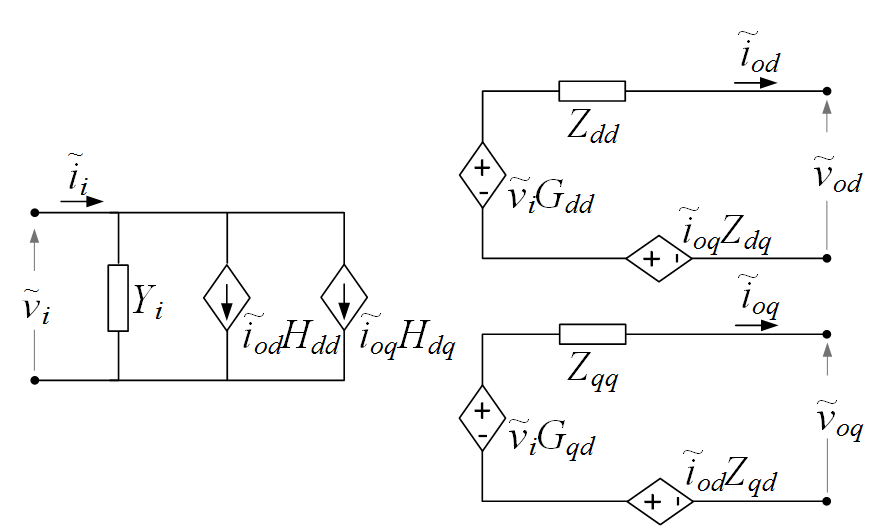LIBRARY
Low-Frequency Terminal-Behavioral Modeling of Three-Phase Converters

The three-port network can be directly used to build the small-signal linear model of the dc-ac converter around the particular operating point (Fig. 1). The four matrices of the transfer functions can be defined: Go - audio susceptibility, Zo - output impedance, Yi - input admittance, and Hi - back current gain. Nine unterminated transfer functions describe the dynamics of the converter, however, they have to be decoupled, or "unterminated", in order to fully characterize the dynamics of the particular converter. Eq.1 presents a generalized linear transformation that gives the un-terminated transfer functions from the measured, terminated ones (denoted with the letter m in the index) for any ac-ac, ac-dc, dc-ac and dc-dc converter.
The experimental results obtained using the inverter are shown in Fig. 2, demonstrating a very good match between the model and the experimental waveforms.























































































